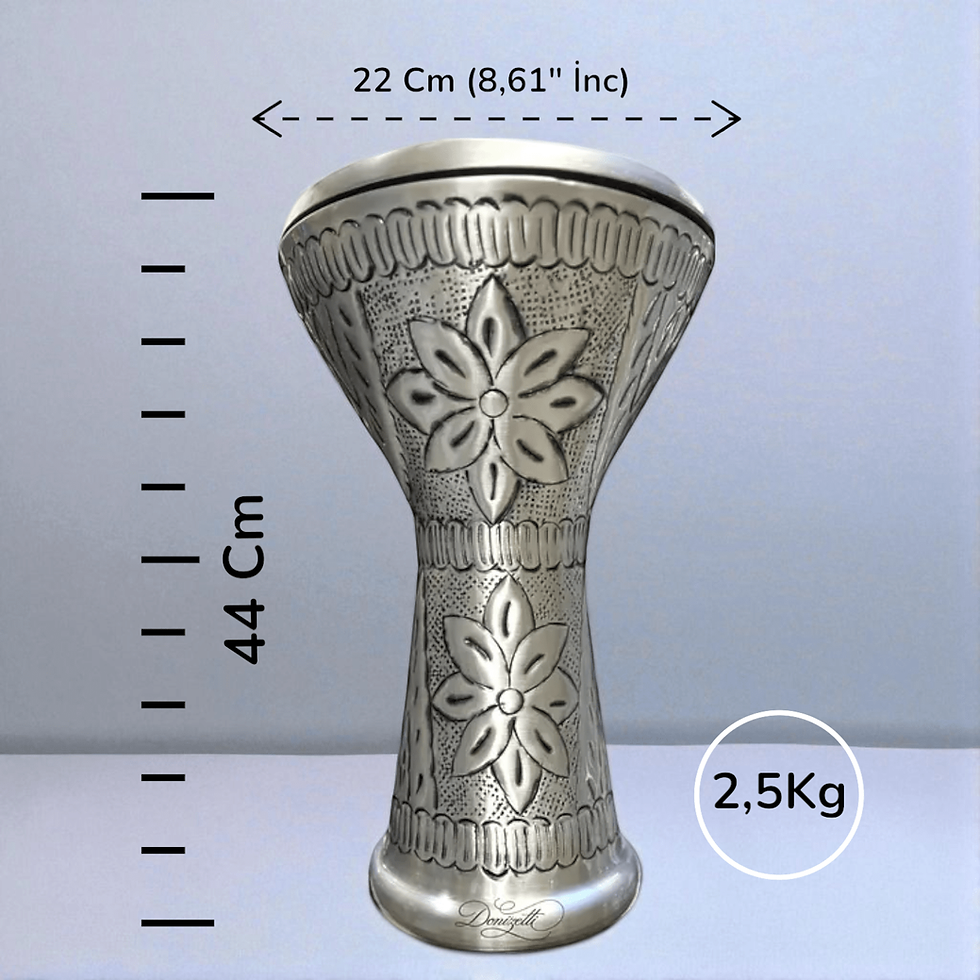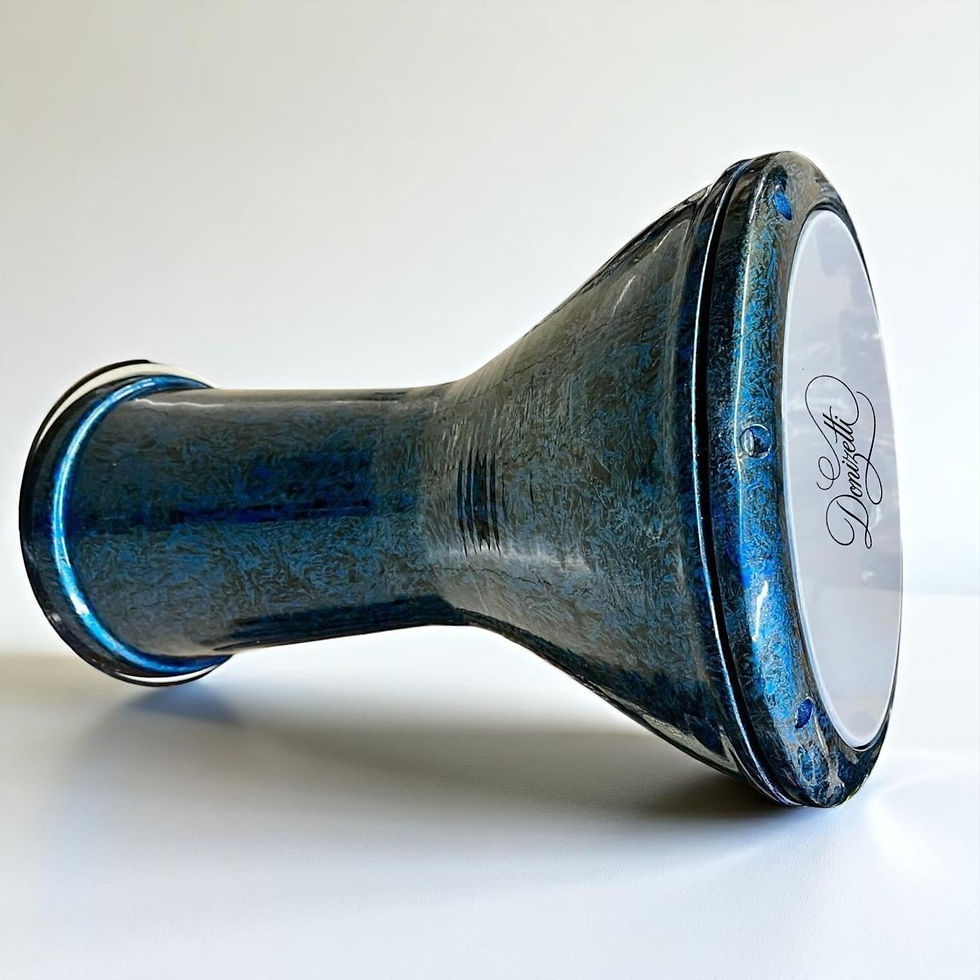Egyptian Darbuka Models
The darbuka, an essential instrument in oriental music, offers a rich tone and powerful rhythm, especially in Egyptian-style models. Handcrafted with bodies typically made of cast iron or aluminum, these darbukas are preferred for stage performances and studio recordings. A high-quality Donizetti darbuka stands out for its aesthetic design and durability. However, there are many options that appeal not only to professionals but also to beginners. While inexpensive darbuka models are a budget-friendly option for beginners, prices vary depending on the quality of workmanship and materials, offering options to suit all skill levels. Egyptian-style oriental darbukas are an excellent choice for those seeking to combine traditional rhythm with a modern touch.
Egyptian Style Darbuka: A Journey to the Heart of Rhythm (Prices, Recommendations, and Uses)
In the world of music, the Egyptian style darbuka, with its unique sound and aesthetic presence, continues to mesmerize for centuries as one of the unique meeting points of rhythm and melody. This indispensable percussion instrument of Middle Eastern music is a favorite among both professional musicians and rhythm enthusiasts. As Donizetti Darbuka, we will delve into the depths of the Egyptian darbuka, offering a comprehensive guide on everything from its prices and uses to who can play it and what to look out for when choosing one.
What is an Egyptian Style Darbuka? Why is it Different?
The Egyptian darbuka is distinguished from other darbuka types by its unique silhouette and its body, typically made of cast aluminum or copper. Specifically, standard-sized Egyptian darbukas, known as tabla, are renowned for their sharp high-pitched sounds ("tek" and "ka") and deep, full bass tones ("doum"). Larger Egyptian darbukas are called sombati, and even larger ones are referred to as doholha, offering richer and more resonant bass tones.
The difference of the Egyptian darbuka lies not only in its physical structure but also in its playing technique and musical character. It is generally played with open-hand strokes, finger techniques, and fast rhythmic patterns. It finds its place in a wide range of music, from oriental dance music to traditional Arabic music.
Egyptian Darbuka Prices: What Budget Should You Allocate?
Egyptian darbuka prices vary according to several factors:
-
Material Quality: Cast aluminum, copper, or more special alloys affect the price. Handmade and specially processed darbukas can be more expensive than mass-produced ones.
-
Size: Size differences such as tabla (standard), sombati (medium), and doholla (large) are determinants of the price. Generally, as the size increases, so does the price.
-
Workmanship and Design: Hand engravings, carvings, or embellishments on the darbuka increase its artistic value and, consequently, its price. Models painted by professional artists or with special designs may have higher price tags.
-
Brand and Manufacturer: Well-established and reputable brands like Donizetti Darbuka fall within a certain price range due to their quality and assurance.
At Donizetti Darbuka, we offer Egyptian darbuka options suitable for every budget and skill level. We have a wide range, from more affordable models for beginners to high-end darbukas designed for professional stage performance. You can visit our website to get information about current Egyptian darbuka prices.
Egyptian Darbuka Recommendations: Choose the Darbuka That Suits You Best
Here's what to consider when buying an Egyptian style darbuka:
-
Your Level:
-
Beginner Level: Lightweight and easy to use, typically with synthetic skin, more affordable aluminum darbukas are ideal. These are excellent for learning basic techniques.
-
Intermediate Level: Mid-priced models that offer better sound quality and durability, perhaps slightly heavier, can be preferred.
-
Professional Level: Models with a deep sound, sensitive response, high-quality cast bodies, and natural skin (fish skin, goat skin, etc.) should be preferred. These darbukas offer maximum sound performance for stage performances and studio recordings.
-
-
Sound Character: Try the deep bass ("doum") and sharp high-pitched ("tek", "ka") sounds of the darbuka and choose the one that suits you. Each darbuka has its own unique timbre.
-
Type of Skin:
-
Synthetic Skin: Easy to maintain, more resistant to humidity and temperature changes. Suitable for beginner and intermediate levels.
-
Natural Skin: Offers a richer, warmer, and more authentic sound. Preferred by professionals but more sensitive to humidity and temperature changes, may require special care.
-
-
Weight and Size: The weight of the darbuka is important, especially for long playing sessions or transportation. Lighter models may be preferred for children or frequent travelers.
-
Workmanship: The craftsmanship of the darbuka affects not only its aesthetics but also its sound quality and durability. The neatness of the rivets, the tension of the skin, and the smoothness of the body are important.
Who Can Use Egyptian Darbukas? What are Their Uses?
The Egyptian darbuka has a wide range of users and various areas of use:
-
Musicians and Professionals: It is an indispensable percussion instrument in oriental dance music, Arabic music ensembles, fusion projects, and world music concerts. It is also frequently used in studio recordings.
-
Rhythm Enthusiasts and Hobbyists: Anyone interested in rhythm can learn to play the Egyptian darbuka. It is ideal for enjoying time at home as a hobby or in small groups.
-
Music Schools and Workshops: It is a popular instrument for darbuka lessons and rhythm workshops. It is great for developing basic rhythm sense and hand-eye coordination.
-
Children: Children's darbukas, specially designed for them, are a great way for them to get acquainted with music, discover their sense of rhythm, and develop their motor skills. Safe and lightweight models should be preferred.
-
Performance Artists: Oriental dancers can use the darbuka to add an authentic touch to their performances.
As Donizetti Darbuka, with our wide range of Egyptian darbuka models catering to musicians of all levels and ages, we invite you to step into the magical world of rhythm. We are here to help you find your dream darbuka with quality craftsmanship, rich sound, and reasonable prices. Visit our website to browse our Egyptian darbuka models, read reviews, and choose the one that suits you best.








































